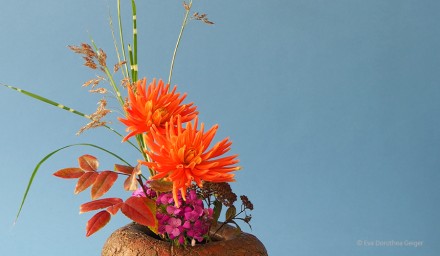Hanami - Japan's blooming spring festival
Every spring, Japan's parks and gardens are transformed into a sea of pastel-colored blossoms. Hanami, the traditional cherry blossom festival, is a cultural highlight that brings people together and celebrates the transience of life.
Beauty and elegance
The magnolia is one of the oldest flowering plants on earth and enchants with its extraordinary beauty and elegant appearance. Magnolias existed millions of years ago, long before bees took over pollination. Instead, it is beetles that pollinate the large, fragrant flowers.
Hina Matsuri - Doll festival
Hina Matsuri (雛祭り), also known as the “girls' festival” or “doll festival”, is celebrated in Japan every year on March 3. It is a traditional festival that wishes happiness and health for girls and is deeply rooted in Japanese culture.
Tomarifune and tazettes
A harmony of flowers
The name Tomarifune carries a deep symbolic meaning. "Tomari" means "standing" or "still", while "fune" is the Japanese word for "boat". These terms embody the idea of a barque or ship at rest in the stillness of the water, a metaphor for the calm and serenity often sought in ikebana.
Merry Christmas
As is the case every year, Christmas is just around the corner and people are thinking about presents for their loved ones, meeting up for a punch or mulled wine at the Christmas market and looking forward to a peaceful festive season.
The last heralds of summer
Autumn has arrived. Nature's last heralds of summer often appear in the form of late summer flowers and fruit, which once again reflect the warmth of the previous months. During this transitional period, the fields begin to glow in golden tones as the days get shorter and the sun gets lower.
Tsukimi – moon gazing
The Tsukimi, or moon viewing festival, is a long-standing tradition in Japan that celebrates the beauty of the autumn moon, usually the full moon in September. It is the time when the moon appears at its fullest and most radiant in the autumn sky.
Kiku no Sekku – Chrysanthemum festival
Kiku no Sekku (菊の節句) is the Japanese chrysanthemum festival, which is celebrated annually on September 9th. It is a traditional festival that was celebrated every year at the imperial court until the Meji period, when chrysanthemums were reserved for the imperial court alone.
Lotos - Hasu
The lotus 語蓮 is an iconic summer plant in Japan. These majestic flowers bloom in ponds and lakes, and their magnificent, often pink or white flowers rise high above the surface of the water.
Summer in Japan
During summer, Japan displays a lush variety of plants and flowers that transform the country into a colorful and vibrant landscape.









